Examining Effective Altruism: Part V
Joseph Bankman, Barbara Fried, legacy and utilitarianism, 2020 and 2022 elections
Ladies and gentlemen, welcome back to Rounding the News. This is Part V in my special investigation series titled Examining Effective Altruism, digging into the origins of the enigmatic ideology underpinning the backstory of the now-disgraced FTX founder, Sam Bankman-Fried.
Originally intended to finish at the end of 2022, the series has continued to take interesting twists and turns that I was not anticipating. As such, I will disclose right off the bat that Part V will not be the final chapter. Instead of skipping huge chunks of material I now believe to be highly relevant in order to stick the landing, I’ve chosen to spend the appropriate amount of time and attention on each bit of the story and will continue to follow the trail wherever it leads.
For now, this multi-part story has led us into very interesting places, indeed:
Part I introduced the modern figurehead of Effective Altruism, William MacAskill, and his empire of altruistic ventures;
Part II took us back in time to the spooky founding of LifeLog, and then Facebook, around a cast of characters including Dustin Moskovitz, Eduardo Saverin, Mark Zuckerberg, Cameron and Tyler Winklevoss, Sean Parker and Chris Hughes;
Part III carried the story through Dustin Moskovitz and his abrupt turn into philanthropy alongside his now-wife, Cari Tuna; and
Part IV explored EA’s ideological godfather, Peter Singer, on his academic journey around the globe and work advancing research in various branches of pseudo-eugenics - and the “passing of the baton” from Singer to MacAskill in modern times.
Now that the history and roots of effective altruism are well-established, we can start to identify where it is that Sam Bankman-Fried and the FTX saga come in to the picture. If we want to truly understand the man and what led him to chart the course for his life that he did, we have to first look at the two people responsible for bringing him into this world.
Meet Sam Bankman-Fried’s… Parents.
Sam Bankman-Fried was born March 6, 1992 in Stanford, California to Joseph Bankman and Barbara Fried.1
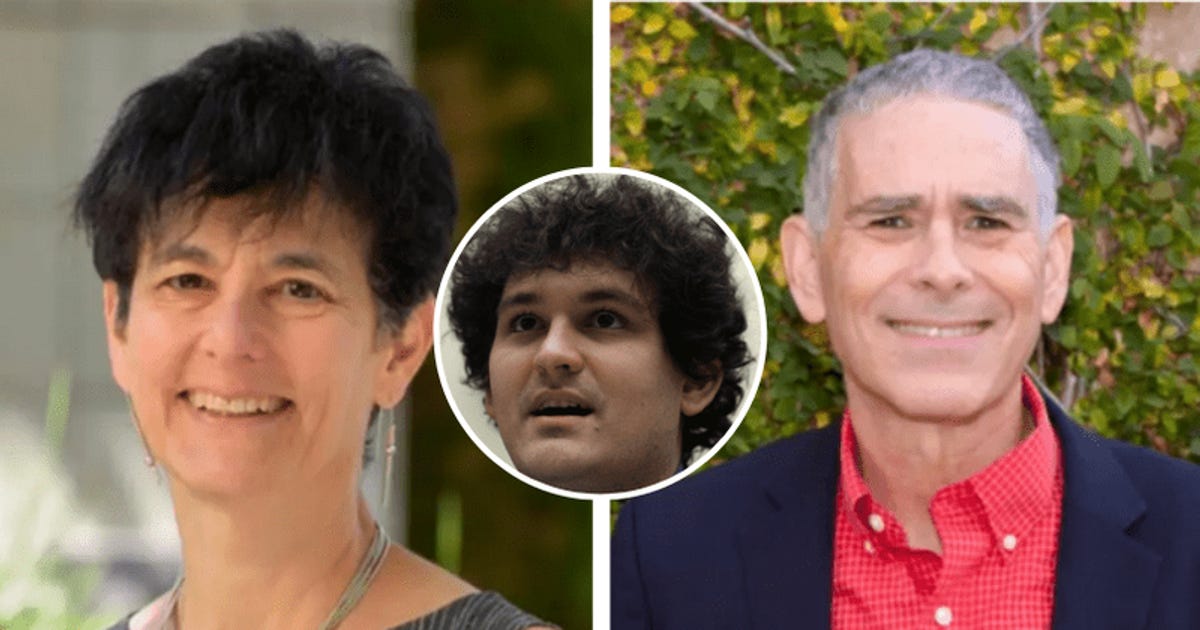
Joseph Bankman
His father, Joseph Bankman, is an American lawyer and psychologist. He graduated from University of California at Berkeley in 1977 and Yale Law School in 1980.
Phi Beta Kappa
While at UC Berkeley, Bankman was a member of Phi Beta Kappa, which describes itself as “America’s most prestigious academic honor society.”2 Its long list of prominent members includes:3
Amy Coney Barrett (Supreme Court Justice)
Alexander Graham Bell
Pete Buttigieg (U.S. Secretary of Transportation/Young Global Leader)
Jimmy Carter
Samuel Clemens (Mark Twain)
KellyAnne Conway
Rivers Cuomo (Weezer)
Brad Delson (Linkin Park)
Dinesh D'Souza (2000 Mules)
David Duchovny (X-Files)
Josh Hawley
Ashley Judd (actor)
Helen Keller (activist and educator)
Henry Kissinger
Peyton Manning (NFL)
Condoleeza Rice (former U.S. Secretary of State)
Susan Rice (former National Security Advisor)
John Roberts (Supreme Court Justice)
John D. Rockefeller Sr. and Jr.
Franklin D. Roosevelt (former President)
Michael Schur (The Office et al)
Ben Shapiro (National File)
Sonia Sotomayor (Supreme Court Justice)
George Stephanopoulos (ABC News, Young Global Leader)
Kateryna Yushchenko (former First Lady of Ukraine)
Robert Zoellick (World Bank, White House Deputy Chief of Staff)
This, of course, could mean nothing beyond being a very interesting and diverse group of people.
Tuttle & Taylor
According to his CV, he was an associate at a legal services firm called Tuttle & Taylor from 1984-1988.4 The firm has undergone a series of name changes over the past century, starting as Harriman, Ryckman and Tuttle most recently operating as Tuttle Law Group.5
Its founding partners were politically active in the early 1900s, representing the face of American Socialism. This included high-profile runs by self-described Marxist Job Harriman for Mayor of Los Angeles and even Vice President of the United States on the ticket with Eugene V. Debs.6 Harriman ran into a fatal campaign obstacle when one of his clients pled guilty to bombing the offices of the Los Angeles Times. He then went on to found a commune in California called Llano del Rio, which then moved to Louisiana.7
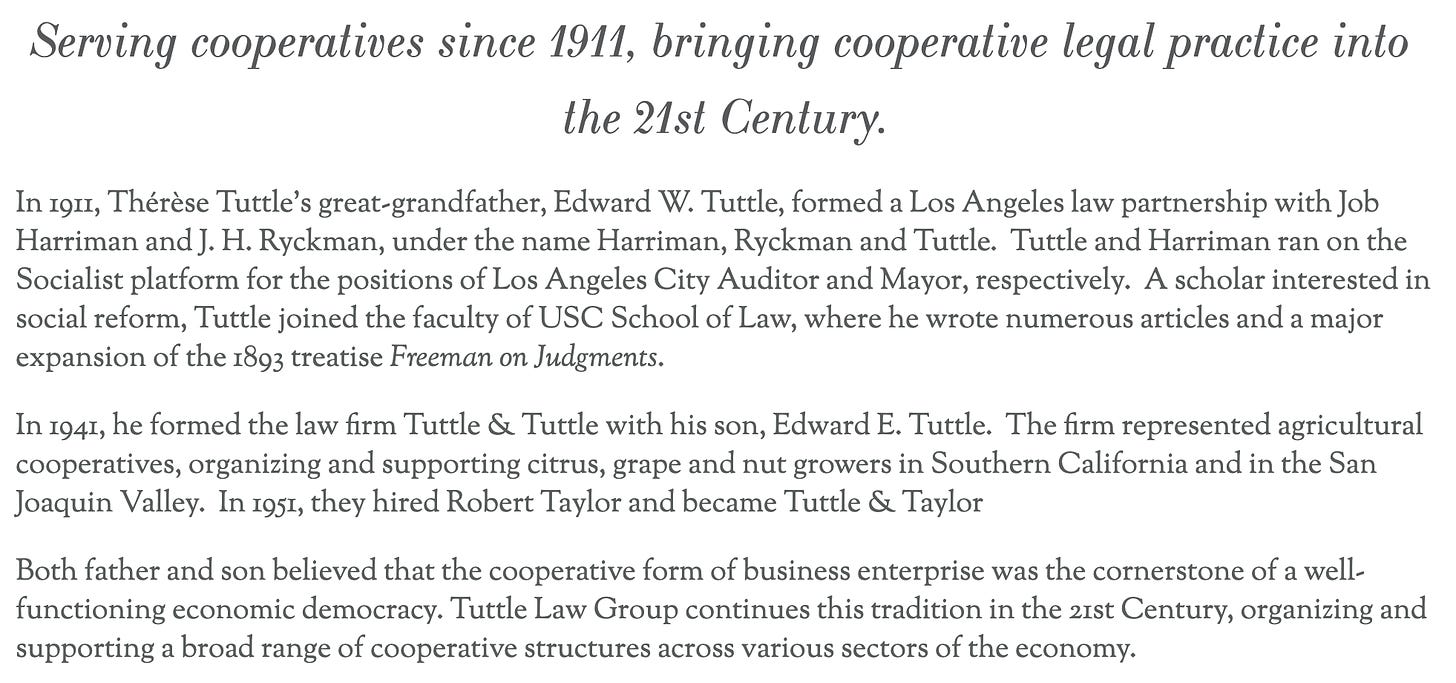
His co-founder, Edward W. Tuttle, also ran on the Socialist platform in for city auditor of LA. “A scholar interested in social reform, Tuttle joined the faculty of USC School of Law” before forming a new firm with his son, Edward E. Tuttle, in 1941 called Tuttle & Tuttle.
The junior Tuttle “served as group supervisor on Caltech classified projects, including the Manhattan Project to develop the atom bomb” during World War II.8 He also served on the board of the Los Angeles World Affairs Council, which (at least according to Wikipedia) would go on to host many high-profile speakers including Presidents George H.W. Bush, Ronald Reagan, Bill Clinton and George W. Bush, British Prime Minister Tony Blair, George Soros, former CIA Director David Petraeus, King Charles, the Dalai Lama, Vice President Dick Cheney, John McCain, Jeffrey Sachs, Larry Summers, Elon Musk, and former Secretaries of Defense Donald Rumsfeld and Robert Gates.
The firm took on another partner in 1951, Robert Taylor, leading to yet another name change in 1954 to Tuttle & Taylor. Taylor had “attended Wheaton College, the Massachusetts Institute of Technology, Harvard University and Stanford University, while in the U.S. Naval Reserve.”9
The firm closed down in 2001 before later relaunching as Tuttle Law Group.
Academia
Bankman simultaneously took a position as Assistant Professor at the University of South California Law Center, leaving for Stanford Law School in 1988 to become a Professor in law and business. He remains at the school to this day.
He is considered a “leading scholar in the field of tax law,” having written and presented on the topic of tax shelters and regulatory compliance for years. As described on his Stanford Law School bio, "his writings on tax policy cover topics such as progressivity, consumption tax and the role of tax in the structure of Silicon Valley start-ups."10
Another area of interest and practise for Bankman is psychology. “Ten years ago, Bankman acquired his clinical psychologist license and began advocating [Cognitive Behavioural Therapy (CBT)] while co-hosting the WellnessCast podcast for law students,” describes Srinija Grandhi on MEAWW.11
Barbara Fried
SBF’s mother, Barbara Fried, is also a law professor at Stanford. Her staff bio describes her as having "written extensively on questions of distributive justice, in the areas of tax policy, property theory and political theory."12
She received numerous degrees from Harvard University between 1977 and 1983.
Paul, Weiss, Rifkind, Wharton & Garrison
According to InfluenceWatch, “Fried started her career as a clerk to Judge J. Edward Lumbard of the U.S. Court of Appeals for the Second Circuit. She then worked for the law firm Paul, Weiss, Rifkind, Wharton & Garrison in New York City” from 1984-1987.13
The firm, “together with its predecessor firms, has been a presence in New York City for nearly 150 years and a part of the international legal community for more than fifty years.”14 Interestingly, Tencent Holdings hired the firm in 2020 to lobby on their behalf.15 Tencent is the owner of WeChat, a key mobile application in the Chinese Social Credit System.1617
Academia
Fried joined Stanford Law School in 1987. In a 2013 interview for the school, Fried discussed a number of topics directly related to Effective Altruism, particularly the subject of utilitarianism:
“Libertarians and Rawlsians agree on very little, but they share a fundamental hostility to utilitarianism,” says Fried. She explains that the goal of utilitarianism is to maximize overall well-being for society as a whole. “The strict version of utilitarianism pursues that goal by throwing everyone’s well-being into the same hopper, aggregating all gains and losses to well-being from different policy options, and then choosing the one that offers the greatest good.”
Friend questions the notion that “rights theory” makes any more sense than the above-described approach.
“However rich a country is and however much of its GDP it devotes to health care, at some point it will have to choose between allocating more money to, say, cancer research or early childhood prevention,” she says. “And before we have gotten to that particular set of hard choices, we will have made scores of others in deciding how much of our budget to allocate to health care to begin with, rather than, say, education, the military, Social Security, etc.”
But, Fried explains, the necessity for tradeoffs is hardly limited to material resources. “Every time you get in a car, reroof your house, or walk onto a crowded city bus, your conduct poses some risk of physical or psychological harm to others. The job of any ‘rules of the road,’ be they government regulation or moral norms, is to figure out how to balance your legitimate interests in pursuing your life projects against others’ interests in not being harmed in the process. And however we strike that balance, if different people will be affected differently, we will necessarily be trading off one group’s well-being for another’s.”
Utilitarians, says Fried, have faced that necessity head-on. “However unappealing one might find their answer, at least it is an answer. Rights theory, in contrast, has yet to provide one.”
Utilitarians like Peter Singer, perhaps?
In 2015, Fried wrote a review of Singer’s book titled The Most Good You Can Do: How Effective Altruism is Changing Ideas About Living Ethically.18
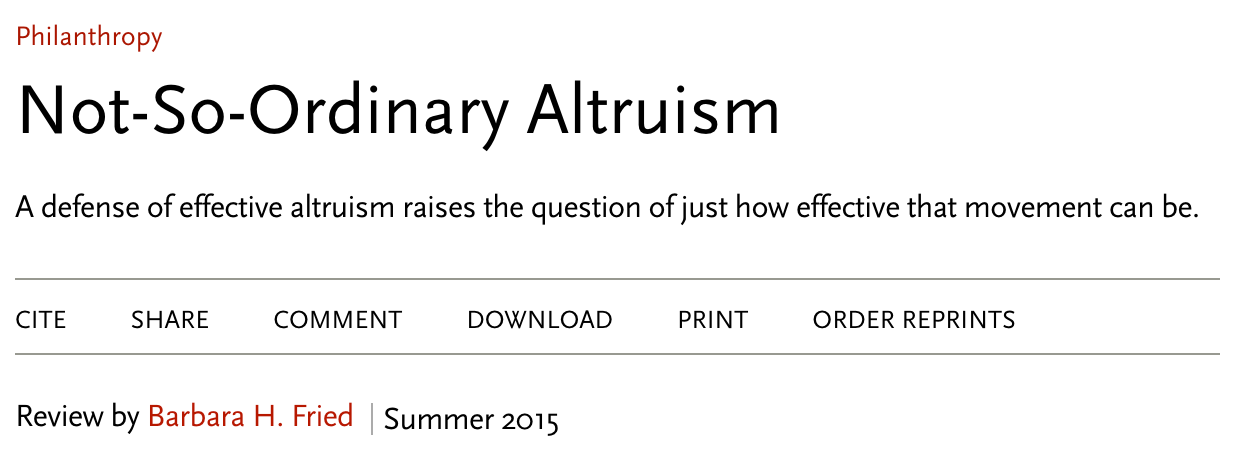
Right in the opening paragraph, Fried cites Singer’s 1972 essay titled Famine, Affluence, and Morality - the very same essay that led William MacAskill to kick off his foray into effective altruism.19 She then demonstrates that she is well aware of the intricacies of the EA movement, describing it as "a worldwide network of people who have made a commitment to fight global poverty and disease."
Though he’s not mentioned by name, Fried alludes to an EA practitioner who “donated one of his kidneys to a stranger,” which almost definitely refers to Matt Wage, a student of Singer’s at Princeton and an employee at Jane Street Capital.
She concludes the review by stating:
The core message of EA is as powerful now as it was when Singer first pressed it 40 years ago. The central challenge for EA, as it works to go mainstream, is to translate that message into a call to action with broad appeal.
Fried also served for a time on the board of directors for the school’s McCoy Family Center for Ethics in Society.20 The McCoy Center is heavily funded by the William and Flora Hewlett Foundation.21 It has also played host to Peter Singer for at least one major talk on Effective Altruism, around the same time as Fried's review of his book.22 Singer and Fried both occupy the academic realm of ethics, so it makes sense to find their work featured on the same stages or published within the same issues of journals; for example, Volume 110, Number 3 of Ethics.23
Mind the Gap

One of the biggest points of political intrigue to come out of the FTX debacle was the revelation that Barbara Fried was behind a “secretive Silicon Valley group that has funnelled over $20 million to Democrats.”24 This group is a Super PAC called Mind the Gap.
According to OpenSecrets, MTG began operations no later than the 2018 election cycle (which saw Democrats reclaim the House of Representatives).25 As of January 2020, MTG had been "formed less than two years ago" yet had already been "quietly routing millions of dollars to Democratic candidates and groups across the country in the 2018 and 2020 election cycles, emerging as a new power center in the Silicon Valley political scene."26

In a sense, MTG can be seen as fitting in perfectly with TIME Magazine’s description of “the shadow campaign that saved the 2020 election”:27
…a well-funded cabal of powerful people, ranging across industries and ideologies, working together behind the scenes to influence perceptions, change rules and laws, steer media coverage and control the flow of information. They were not rigging the election; they were fortifying it.
There are many people and organizations specifically named in the self-exposé authored by Molly Ball, Leslie Dickstein, Mariah Espada and Simmone Shah. I compiled a list of people and organizations named in the TIME article on the Campfire Wiki page for the 2020 election. I can’t help but wonder: as I continue to write this, how close will Mind the Gap and the Bankman-Frieds - and Effective Altruism as a whole - be associated with the self-described “cabal”?
I didn’t have to wait long to find out. Reviewing Mind the Gap’s FEC filings on OpenSecrets reveals that from 2018-2022, the PAC sent over $100,000 to a company called the Analyst Institute, which is indeed named in the TIME article.282930
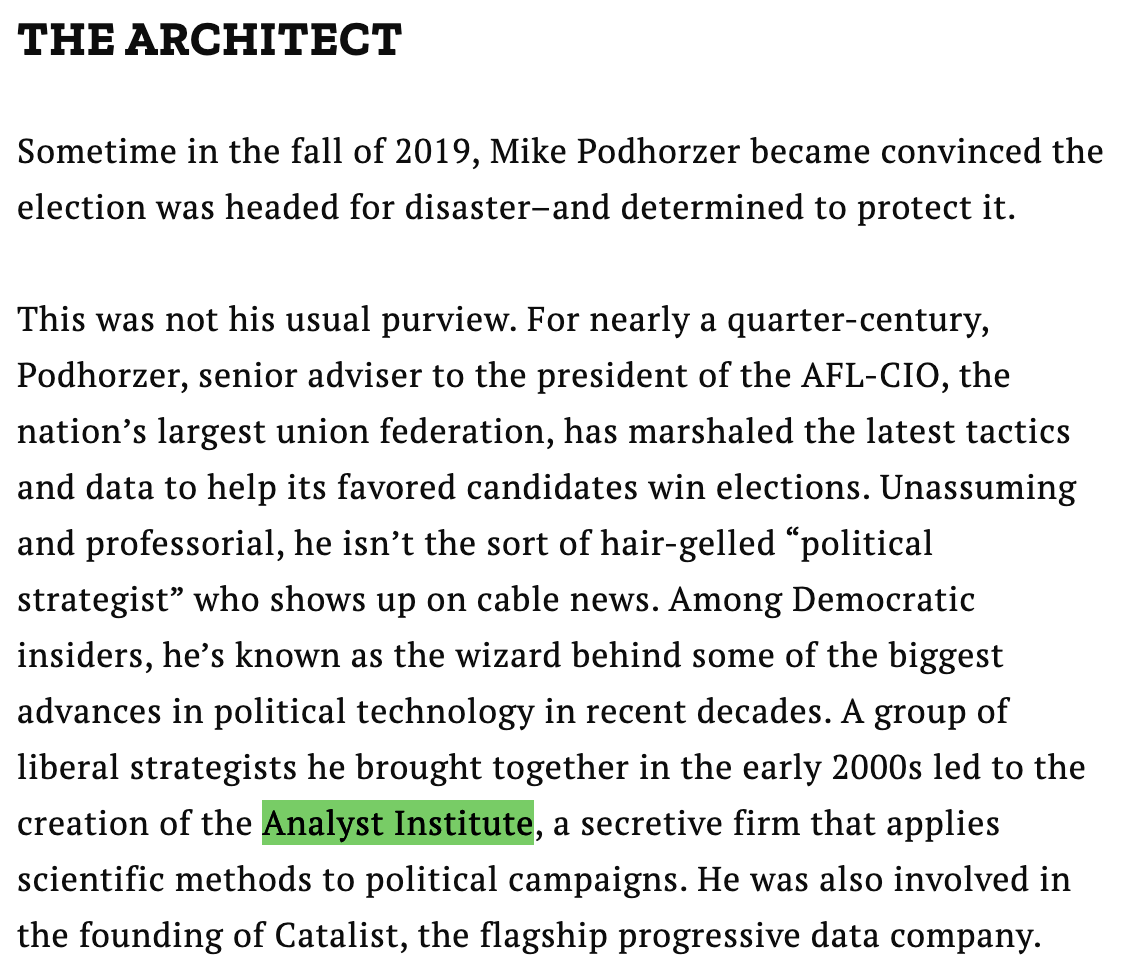
AI’s client list from 2012-2022 is full of liberal political action committees (PACs) and NGOs including ActBlue, Color of Change, Future Now Fund, League of Conservation Voters, MoveOn, NARAL Pro-Choice America, National Democratic Training Committee, NextGen Climate Action, Obama for America, Planned Parenthood Votes, Progressive Change Campaign Committee, Progressive Turnout Project, Swing Left and Women Vote.31
Most overtly, though, its clients include the Democratic National Committee (DNC) itself. Others of interest include the Democratic Congressional Campaign Committee, the Democratic Parties of New Mexico and Tennessee, and the Sierra Club.

Funnily enough, the Sierra Club also shows up in the TIME article:

The Sierra Club is an environmental preservation organization with uncomfortably close ties to eugenics. An article released by Politico’s Environment & Energy Publishing shortly after the death of George Floyd in 2020 described the Club’s founder, John Muir, as “repeatedly denigrated Native Americans who lived on the lands he cherished, referring to them as ‘dirty.’ And he notoriously used the derogatory term 'sambos' referring to African Americans.”32
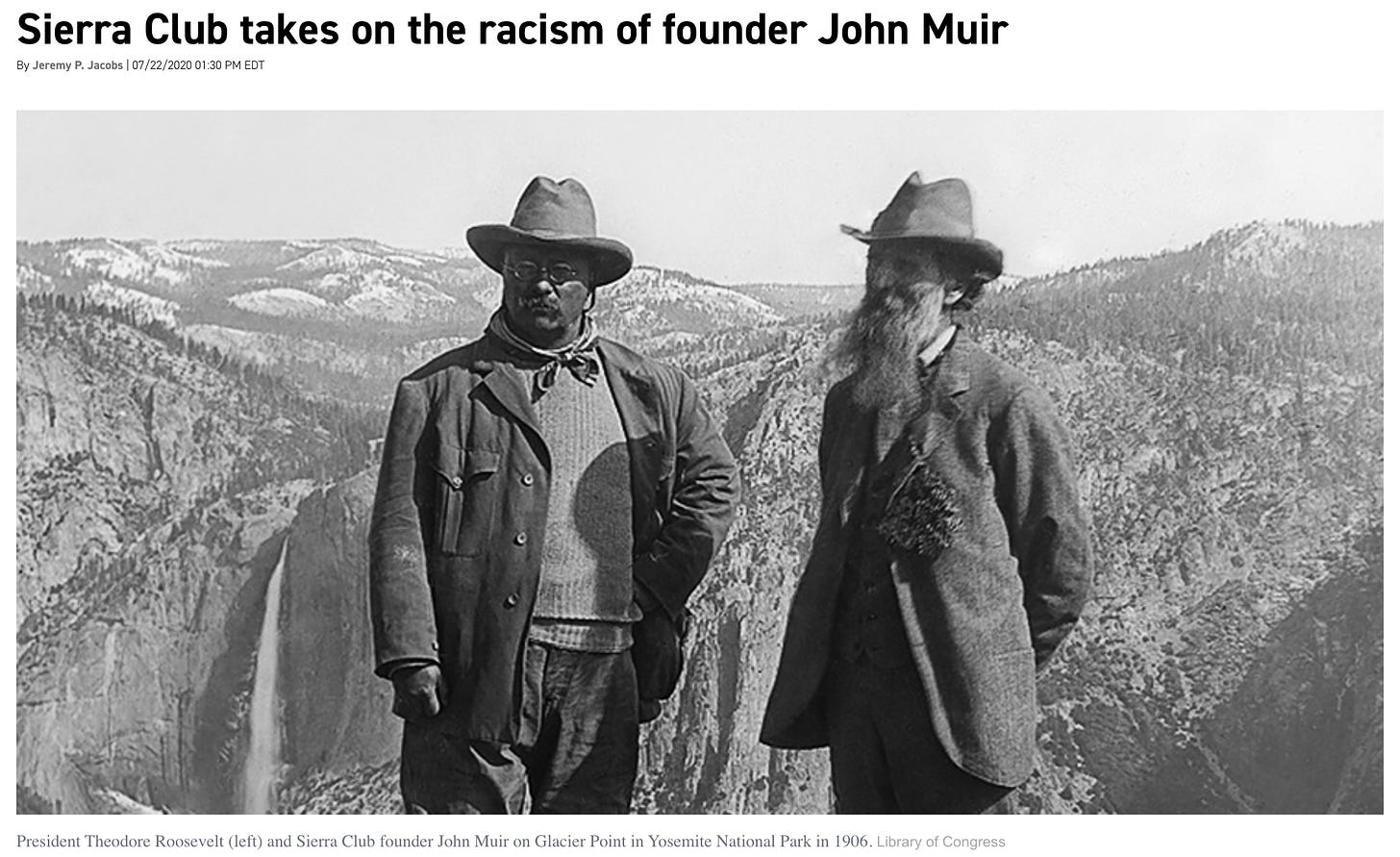
It gets worse:
The Sierra Club had other prominent members who espoused racist views.
David Starr Jordan, who was on the club’s board during Muir’s presidency, was a "kingpin" of the eugenics movement, Brune noted, including advocating for the forced-sterilization laws that affected predominantly Black, Latina and Indigenous women. He also co-founded the Human Betterment Foundation, which produced research later taken up by Nazis.
Muir was also friends with Henry Fairfield Osborn, “a New York City aristocrat and conservationist who was also a white supremacist. Osborn helped found the American Eugenics Society, which promoted the idea of population control and genetics manipulation.”
In modern times, the Club has been called out for operating as a money and influence laundering front for its donors and directors - including activities that violated non-profit tax law.3334 A report from the Energy & Environment Legal Institute describes, for example, "the degree of influence the Sierra Club has gained over regulatory activities at the U.S. Environmental Protection Agency (EPA)."35 It also names the following donors as effectively benefitting from their "altruistic" contributions to the Sierra Club and its foundation:
Michael Bloomberg, through Bloomberg Philanthropies, Bloomberg Family Foundation and Bloomberg L.P.;
Nathanial Simons and Laura Baxter-Simons, through the Sea Change Foundation, Elan Management and Prelude Ventures;
Roger Sant, through the Summit Foundation and Applied Energy Services (AES);
Recurrent Energy Development, through a partnership with Google and Kohlberg Kravis Roberts & Co.;
Tides Foundation and the Tides Center;
The Energy Foundation through the William and Flora Hewlett Foundation and the Mertz Gilmore Foundation.
Ah, yes… the Hewlett Foundation again! Recall from Part II of this series that Cari Tuna and Dustin Moskovitz were guided by a representative from the William and Flora Hewlett Foundation early on in their venture into effective altruism.
Add onto this the fact that the foundation is a primary funder of the McCoy Family Center for Ethics in Society (where Barbara Fried sat on the board), and it’s looking even more interesting.
I hadn’t yet looked much into the Hewlett Foundation, other than noting their funding of many, many organizations associated with this investigation. What I didn’t realize until reading the above-described E&E Legal Institute report is that the late William Hewlett was two things:
The “Hewlett” part of Hewlett-Packard (HP);
An outspoken advocate of population control policies.36
Something else worth pointing out is the fact that many of these so-called “progressive” non-governmental organizations seem to focus on a lot of the same things, without an obvious connection between the causes. In this case, the E&E report provides a pretty interesting explanation, using the Hewlett Foundation as an example:
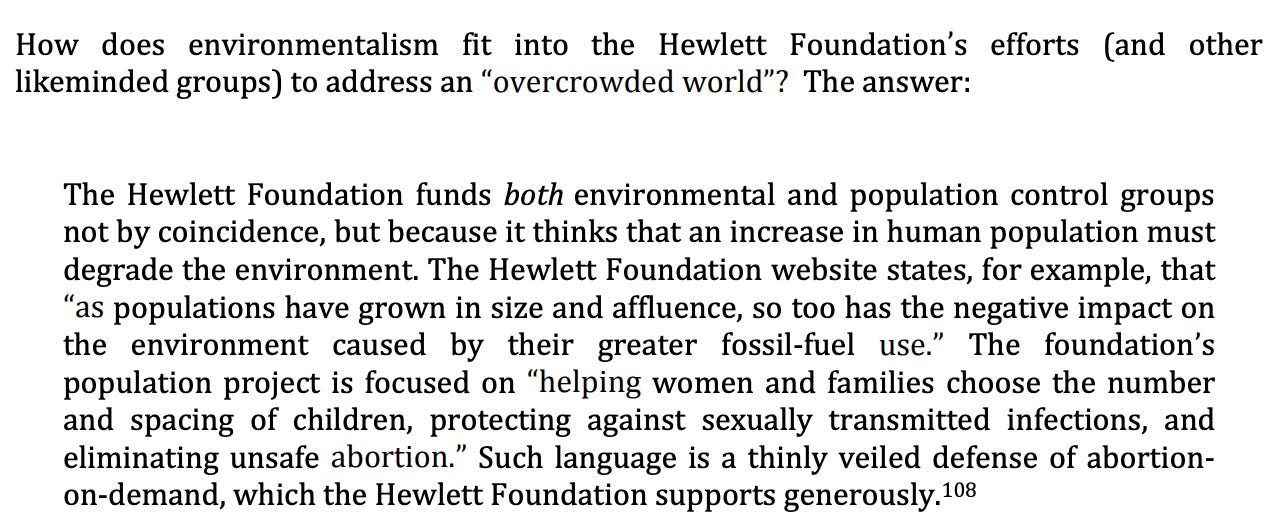
Indeed, the above summary ties together activism around climate change, population control and infectious diseases in a succinct, logical package based on the foundation’s own words. Taking it a step further, the author states:
Put more directly, the foundations of the Rockefellers, Ted Turner, Bill Gates, David Packard, and William Hewlett support high-cost and unreliable energy sources, surely knowing this will cause the premature death of millions, perhaps billions of people worldwide – something they think is not merely acceptable, but even desirable. Of course, they know it will have no effect on their families.
Very dark.
Based on the Sierra Club Foundation’s tax filings and annual reports from 2001-2016 (supplemented by an informative writeup from InfluenceWatch), their friends and donors have come from all walks of power. A couple of particularly notable examples are:373839404142434445464748
Philanthropic giants including the Bill & Melinda Gates Foundation, Bloomberg Philanthropies, Craig Newmark Philanthropies, Craigslist Charitable Fund, David and Lucile Packard Foundation, Ford Foundation, MacArthur Foundation, McKnight Foundation, Merck, Musk Foundation, Oak Foundation, Omidyar Network, Pew Charitable Trusts, Robert Wood Johnson Foundation, Rockefeller Brothers Fund, Rockefeller Philanthropy Advisors, Silicon Valley Community Foundation, Skoll Global Threats Fund, Tides Foundation, Turner Foundation - yes, as in Ted Turner, who also founded… the United Nations Foundation, United Way, Wallace Global Fund, William and Flora Hewlett Foundation and the YMCA;
Pharmaceutical and biotech giants including Amgen, Bristol-Myers Squibb, Eisai, Genentech, Genzyme, GlaxoSmithKline, Johnson & Johnson, Medtronic, Pfizer, Regeneron, Takeda and Thermo Fisher Scientific;
Tech giants including Apple, Dell, eBay, Google, Hewlett-Packard, IBM, Intel, Microsoft, Motorola, Oracle, PayPal, Salesforce, Siemens, Sun Microsystems and Yahoo;
Entertainment giants including the Entertainment Industry Foundation, Hulu, the National Hockey League (NHL), Sony Pictures Entertainment and Time Warner;
Telecommunications giants including AT&T and Verizon;
Banking, investment and financial services giants including American Express, Bank of America, Bank of New York Mellon, Barclays, BlackRock, Charles Schwab Corporation, Citibank, David Rockefeller Fund, Deutsche Bank, Fannie Mae, Fidelity, Freddie Mac, Goldman Sachs, HSBC, JPMorgan Chase, KPMG, Lehman Brothers, Merrill Lynch, Moody’s, Prudential, Rockefeller Capital Management, Sallie Mae, State Street, UBS, U.S. Bank, Vanguard, Visa and Wells Fargo;
Oil giants including American Petroleum Services, BP, Chevron, ExxonMobil, Halliburton and Shell;
Food giants including Coca-Cola, Kraft Foods, Mondelez, Monsanto, Nestlé, PepsiCo, Starbucks, Unilever and Whole Foods Market;
Science and healthcare giants including the American Heart Association, Elsevier Foundation, John Wiley & Sons, Kaiser Permanente, Sage Publications and Tenet Health;
Media giants including the Chicago Tribune, MSNBC, New York Times and Thomson Reuters;
Military contractors including Aerojet, Boeing, Northrop Grumman and Qualcomm;
Government bodies including the States of California and Montana, as well as the National Committee on United States-China Relations…
…and the Center for American Progress, a think tank founded by the ever-controversial John Podesta.49
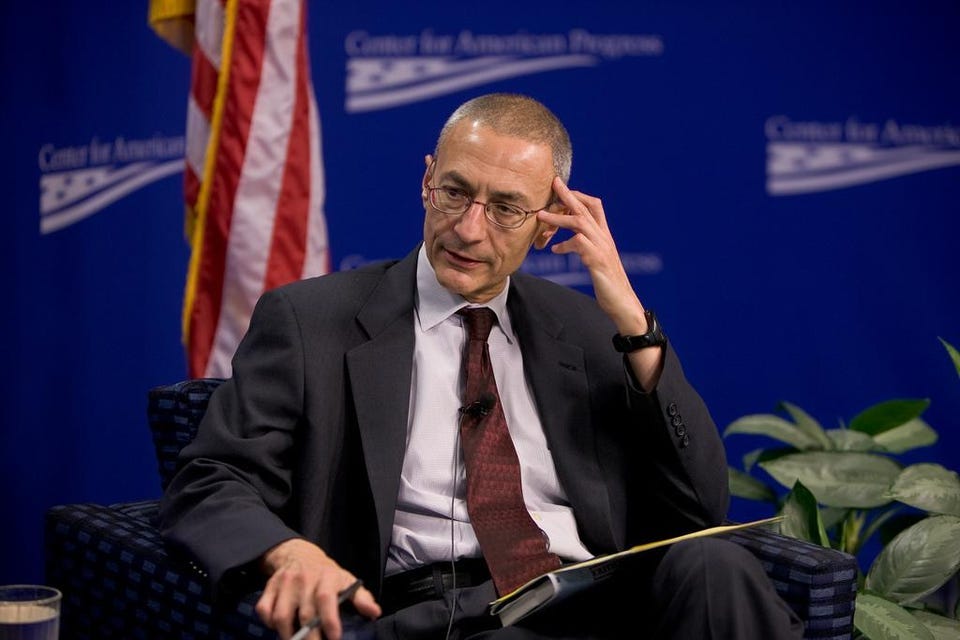
…and Steve Kirsch, through his Steven and Michele Kirsch Foundation.

Much more could be said about Mr. Bankman and Mrs. Fried. But…
That’s really interesting, but for the love of God, get to SBF!
Okay, okay. I know. This journey has been long and winding, and has certainly taken me down paths I didn’t expect. In the end, though, each nook and cranny has only brought out more intrigue, and has seemingly helped frame a lot of the big picture that has thus far seemed to be only loosely connected ideological concepts and webs of donors.
Now, we’ve got a framing of who SBF’s parents were, and some of the legacies they occupy. Let’s move in for the touchdown and zero in on the man himself: Sam Bankman-Fried.
If you’ve enjoyed the show and have been watching live, please drop us a Rumble Rant or a tip on Rokfin.
Most importantly, before you leave, go sign up as a member of our Locals community at www.RoundingtheEarth.locals.com. There, we are hosting weekly “insider” discussions about topics we’re not yet prepared to go public with, but bear discussing nonetheless.
If you have not read Mathew’s viral article, on FTX and the Grand Unified Theory of the associated disaster, it’s time you do so, as I consider this Rounding the News special investigation to be supplementary to his piece.
I have been Liam Sturgess, and you can find me at www.LiamSturgess.com, or on Twitter @TheLiamSturgess. See you on Friday for our regularly-scheduled weekly news roundup, right here on Rounding the Earth.
Sam Bankman-Fried. EA Forum. Retrieved November 24, 2022, from https://archive.ph/rOiPC
Home. PBK - Phi Beta Kappa. Retrieved August 29, 2022, from https://archive.vn/gNuSQ
Notable Phi Beta Kappa Members. Phi Beta Kappa. Retrieved November 13, 2022, from https://web.archive.org/web/20221113022318/https://www.pbk.org/Members
Bankman, J. CV. Stanford Law School. Retrieved December 16, 2022, from https://web.archive.org/web/20221216083614/https://law.stanford.edu/wp-content/uploads/sites/default/files/person/166200/doc/slspublic/bankman_cv.pdf
History. Tuttle Law Group LLP. Retrieved December 21, 2022, from https://web.archive.org/web/20221221210206/http://www.cooplawgroup.com/history
Meares, H. (2014, April 25). Infernal Machines: The Bombing of the Los Angeles Times and L.A.'s First “Crime of the Century.” KCET. https://www.kcet.org/history-society/infernal-machines-the-bombing-of-the-los-angeles-times-and-l-a-s-first-crime-of-the-century
Meares, H. (2017, May 1). Llano del Rio: The ruins of LA’s socialist colony. Curbed LA. https://la.curbed.com/2017/5/1/15465616/utopia-socialist-los-angeles-llano-del-rio
Edward E. Tuttle; Engineer and Lawyer Founded Tuttle & Taylor. (1996, August 18). Los Angeles Times. https://archive.vn/pQOc8
Memorial Services Set for Tuttle & Taylor Name Partner Robert G. Taylor. (2001, October 2). Metropolitan News Company. https://archive.vn/WyZuq
Joseph Bankman. Stanford Law School. Retrieved December 21, 2022, from https://law.stanford.edu/directory/joseph-bankman/
Grandhi, S. (2022, November 22). Who are Sam Bankman-Fried’s parents? FTX founder bought $16M vacation home for Stanford University professors. MEAWW. https://meaww.com/ftx-founder-sam-bankman-fried-bought-16-m-vacation-home-stanford-university-law-professor-parents
Barbara Fried. Stanford Law School. Retrieved December 21, 2022, from https://law.stanford.edu/directory/barbara-fried/
Driscoll, S. (2013, November 11). On Trolley Cars, Blame, and Other Diversions. Stanford Law School. https://archive.vn/J6tlX
History. Paul Weiss. Retrieved December 21, 2022, from https://www.paulweiss.com/about-the-firm/history
Paul, Weiss et al Lobbying Profile. OpenSecrets. Retrieved December 21, 2022, from https://www.opensecrets.org/federal-lobbying/firms/summary?cycle=2020&id=D000000769
Huang, Z., & Zheng, S. (2022, January 6). Tencent’s WeChat App Keeps Growing Despite Beijing Crackdown. Bloomberg. https://archive.vn/AWMGE
Li, G. (2021). State Control by Stealth in the Big Data Era – From WeChat to the Social Credit System in China. Journal of Telecommunications and the Digital Economy, 9(4), 88–109. https://doi.org/10.18080/jtde.v9n4.443
Fried, B. H. (2014, August 20). Emotional Empathy Is Not the Culprit. Boston Review. https://archive.vn/VugXn
Ethics Center gets $5 million gift and a new name. (2008, October 1). Stanford Report. https://web.archive.org/web/20100721205128/https://news.stanford.edu/news/2008/october1/ethics-100108.html
Fried, B. H. (2015). Not-So-Ordinary Altruism. Stanford Social Innovation Review. https://ssir.org/books/reviews/entry/not_so_ordinary_altruism
Nast, C. (2022, August 8). The Reluctant Prophet of Effective Altruism. The New Yorker. https://www.newyorker.com/magazine/2022/08/15/the-reluctant-prophet-of-effective-altruism
Fox, D. (2015, August 20). What are the arguments for and against effective altruism? Peter Singer TED talk & a Boston Review forum. The Rotman Institute of Philosophy. https://www.rotman.uwo.ca/what-are-the-arguments-for-and-against-effective-altruism-peter-singer-ted-talk-a-boston-review-forum/
Ethics | Vol 110, No 3. (2000, April). Ethics. https://www.journals.uchicago.edu/toc/et/2000/110/3
Schwartz, B. (2022, December 19). How former crypto king Sam Bankman-Fried and friends quietly donated to political groups and relatives. CNBC. https://web.archive.org/web/20221222201107/https://www.cnbc.com/2022/12/19/how-ftx-founder-sbf-and-friends-quietly-donated-to-political-groups-and-relatives.html
Briz, A., Fisher, T., Jin, B., McClure, J., & Mihalik, L. (2018, December 22). Election Results 2018: Live Midterm Map by State & Analysis. Politico. https://web.archive.org/web/20221125044607/https://www.politico.com/election-results/2018/
Schleifer, T. (2020, January 6). Inside the secretive Silicon Valley group that has funneled over $20 million to Democrats. Vox. https://archive.vn/iDkg9
Ball, M. (2021, February 4). The Secret History of the Shadow Campaign That Saved the 2020 Election. Time. https://archive.vn/5wH1a
Expenditures by Mind the Gap, 2018. (2022, November 17). OpenSecrets. https://archive.vn/QUkbS
Expenditures by Mind the Gap, 2020. (2022, December 23). OpenSecrets. https://web.archive.org/web/20221223085848/https://www.opensecrets.org/outside-spending/detail/2020?cmte=C00683649&tab=expenditures
Expenditures by Mind the Gap, 2022. (2022, December 23). OpenSecrets. https://web.archive.org/web/20221224011743/https://www.opensecrets.org/outside-spending/detail/2022?cmte=C00683649&tab=expenditures
Vendor/Recipient Profile: Analyst Institute. (2022, October 23). OpenSecrets. https://web.archive.org/web/20221224054143/https://www.opensecrets.org/campaign-expenditures/vendor?cycle=2022&vendor=Analyst+Institute&year=2018
Jacobs, J. P. (2020, July 22). Sierra Club takes on the racism of founder John Muir. E&E News. https://web.archive.org/web/20230104193737/https://www.eenews.net/articles/sierra-club-takes-on-the-racism-of-founder-john-muir/
Johnson, D. (2015, July 20). Sierra Club has become front group for donors’ financial interests. The Washington Times. https://web.archive.org/web/20230104195824/https://www.washingtontimes.com/news/2015/jul/20/drew-johnson-sierra-club-has-become-front-group-do/
Richardson, C. (2015). Big Donors… Big Conflicts: How Wealthy Donors Use the Sierra Club to Push Their Agenda. Energy & Environment Legal Institute. https://eelegal.org/wp-content/uploads/2015/07/Big-Donors-Big-Conflicts-Final1.pdf
Schnare, D. W. (2014). How the Sierra Club and the Sierra Club Foundation Violate Non-Profit Law. Energy & Environment Legal Institute. https://web.archive.org/web/20230104200346/https://eelegal.org/wp-content/uploads/2014/09/Bootleggers-and-Baptists-The-Sierra-Club-Hucksterism-A-2014-EE-Legal-Report.pdf
Follett, C. (2020, July 21). Neo‐Malthusianism and Coercive Population Control in China and India: Overpopulation Concerns Often Result in Coercion. CATO Institute. https://www.cato.org/policy-analysis/neo-malthusianism-coercive-population-control-china-india-overpopulation-concerns#how-neo-malthusianism-came-china
Donor Thanks. Sierra Club. Retrieved January 4, 2023, from https://archive.ph/Uj8Pr
Chu, D., & Berkenfeld, S. All In: Annual Report 2016. Sierra Club Foundation. Retrieved January 4, 2023, from https://web.archive.org/web/20230104230058/https://www.annualreports.com/HostedData/AnnualReportArchive/s/sierra-club-foundation_2016.pdf
Martin, P., & Berkenfeld, S. A Pivotal Moment: Annual Report 2015. The Sierra Club Foundation. Retrieved January 4, 2023, from https://web.archive.org/web/20230104232916/https://www.annualreports.com/HostedData/AnnualReportArchive/s/sierra-club-foundation_2015.pdf
Martin, P., & Berkenfeld, S. Forward: solutions - Annual Report 2014. The Sierra Club Foundation. Retrieved January 4, 2023, from https://web.archive.org/web/20230104233555/https://www.annualreports.com/HostedData/AnnualReportArchive/s/sierra-club-foundation_2014.pdf
Martin, P., & Keeshan, L. A Thousand Invisible Cords: Annual Report 2013. The Sierra Club Foundation. Retrieved January 4, 2023, from https://web.archive.org/web/20191002185732/https://www.sierraclubfoundation.org/sites/sierraclubfoundation.org/files/TSCF-Annual-Report-2013.pdf
Martin, P., & Keeshan, L. Momentum to Win: Annual Report 2012. The Sierra Club Foundation. Retrieved January 21, 2022, from https://web.archive.org/web/20220121071708/https://www.sierraclubfoundation.org/sites/sierraclubfoundation.org/files/TSCF_AR_2012_FINAL-web.pdf
Keeshan, L., & Martin, P. Grassroots strength. Real results. Annual Report 2011. The Sierra Club Foundation. Retrieved April 21, 2022, from https://web.archive.org/web/20220421020652/https://www.sierraclubfoundation.org/sites/sierraclubfoundation.org/files/2011-annual-report.pdf
Blackford, L., & Martin, P. Healthy People. Healthy Planet. Annual Report 2010. The Sierra Club Foundation. Retrieved April 21, 2022, from https://web.archive.org/web/20220421020749/https://www.sierraclubfoundation.org/sites/sierraclubfoundation.org/files/uploads/2010-annual-report.pdf
Blackford, L., & Martin, P. Partnerships for the Planet: Annual Report 2009. The Sierra Club Foundation. Retrieved July 19, 2017, from https://web.archive.org/web/20170719220135/http://www.sierraclubfoundation.org/sites/sierraclubfoundation.org/files/2009-annual-report.pdf
Heil, R., & Martin, P. Annual Report 2007. The Sierra Club Foundation. Retrieved April 29, 2022, from https://web.archive.org/web/20220429052947/https://www.sierraclubfoundation.org/sites/sierraclubfoundation.org/files/2007Annual%20Report.pdf
Skaff, M., & DeCock, J. Annual Report 2006. The Sierra Club Foundation. Retrieved July 19, 2017, from https://web.archive.org/web/20170719232445/http://www.sierraclubfoundation.org/sites/sierraclubfoundation.org/files/2006%20AnnualReport.pdf
Sierra Club Foundation. InfluenceWatch. Retrieved January 10, 2023, from https://archive.ph/uwXSJ
Savage, C. (2008, November 6). John Podesta, Shepherd of a Government in Exile. The New York Times. https://archive.ph/zflYY

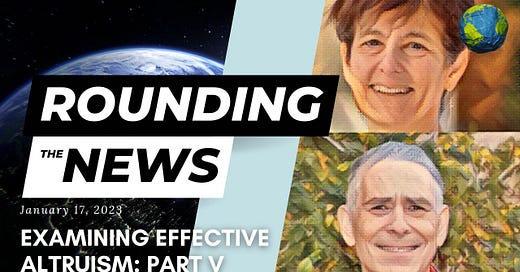





Hats off and thanks mate.. an incredible research effort and priceless dirtbag list to bookmark! <3
Your investigative skills are en pointe, Liam! Informative, entertaining, and addictive. You could, most likely, publish this series as a whole book. Just sayin’.